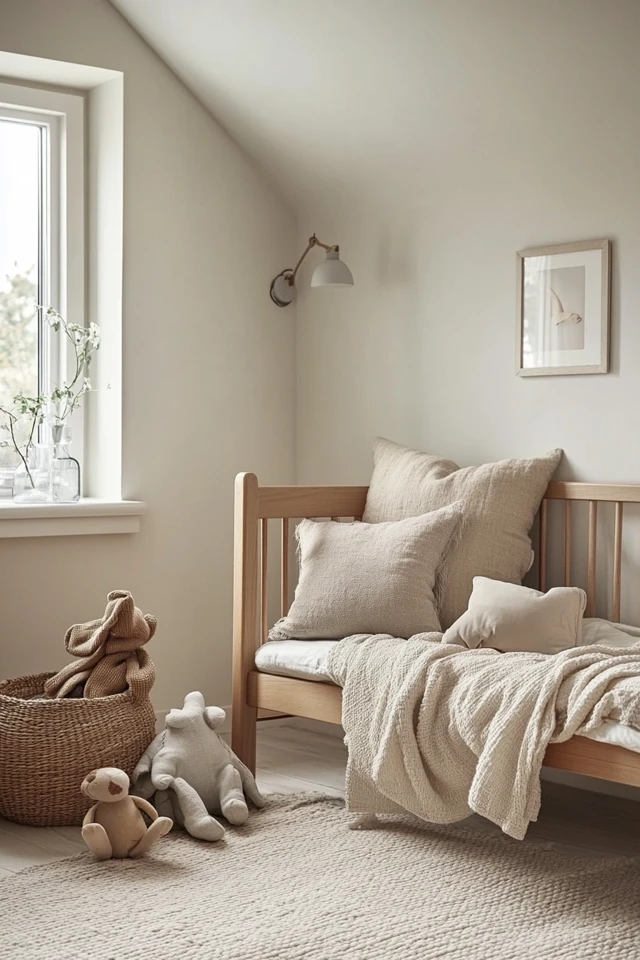Scandinavian design is renowned for its simplicity, functionality, and timeless elegance, making it an excellent choice for creating a kid-friendly space. A Scandinavian kids’ room strikes the perfect balance between minimalism and coziness, with a focus on natural materials, soft colors, and practical design. Whether you’re working with a small space or a larger area, these tips will help you craft a Scandinavian-inspired haven for your child.
When I redesigned my daughter’s room in the Scandinavian style, I was amazed at how functional and calming the space became. The neutral tones made the room feel airy and bright, while the focus on organization helped keep toys and clutter under control. Best of all, the design evolved beautifully as she grew, proving just how versatile this style can be.
Let’s dive into the best tips for creating a stylish and functional Scandinavian kids’ room.
Why Scandinavian Design Works for Kids’ Rooms
- Functionality: Scandinavian design prioritizes practicality, which is essential for a child’s dynamic needs.
- Timeless Appeal: Neutral tones and classic design elements grow with your child, reducing the need for frequent redecorating.
- Calm Atmosphere: Light colors and natural textures create a serene space that fosters play, learning, and rest.
- Encourages Organization: Clever storage solutions keep the room tidy and clutter-free.
1. Stick to a Neutral Color Palette
Why It Works:
Soft, neutral tones like white, beige, and gray create a calming backdrop that complements Scandinavian design.
How to Implement:
- Use white or light gray for walls to make the room feel bright and spacious.
- Incorporate soft pastels like blush pink, sage green, or muted blue for accents.
- Keep furniture in natural wood tones or neutral finishes.
Pro Tip: Add pops of color through toys, books, or a playful rug to keep the space from feeling too monochromatic.
2. Incorporate Natural Materials
Why It Works:
Scandinavian design celebrates the beauty of nature, which is perfect for creating a warm and inviting space.
How to Implement:
- Choose furniture made of light woods like pine, oak, or birch.
- Add a woven jute or wool rug for texture and warmth.
- Use natural fabrics like cotton or linen for bedding and curtains.
Pro Tip: Look for sustainable and eco-friendly materials to align with Scandinavian principles of mindful living.
3. Prioritize Multi-Functional Furniture
Why It Works:
Scandinavian design emphasizes functionality, which is key in a kid’s room where space is often at a premium.
How to Implement:
- Choose a bed with built-in drawers for extra storage.
- Use a toy chest that doubles as a bench for seating.
- Opt for modular shelving units that can be adjusted as your child grows.
Pro Tip: Look for furniture with clean, simple lines to maintain the minimalist aesthetic.
4. Keep the Decor Minimal
Why It Works:
Less is more in Scandinavian design, and keeping decor simple allows the space to feel uncluttered and peaceful.
How to Implement:
- Display a few favorite toys or books on open shelves.
- Use one or two wall art pieces, like a minimalist print or a playful illustration.
- Add a small indoor plant for a touch of greenery.
Pro Tip: Rotate decor and toys seasonally to keep the room fresh and engaging without adding clutter.
5. Incorporate Cozy Textures
Why It Works:
Soft textures balance the minimalist elements of Scandinavian design, making the room feel warm and inviting.
How to Implement:
- Layer soft throws or blankets on the bed or a reading chair.
- Add a plush rug or floor cushions for a cozy play area.
- Use textured baskets for toy storage to add visual interest.
Pro Tip: Choose neutral or pastel-colored textiles to maintain a cohesive palette.
6. Maximize Storage Solutions
Why It Works:
Scandinavian design is all about keeping things organized, making clever storage a must for kids’ rooms.
How to Implement:
- Use under-bed storage boxes for seasonal clothes or extra toys.
- Install floating shelves to display books and decor without taking up floor space.
- Incorporate labeled baskets or bins to make cleanup easy for kids.
Pro Tip: Open storage solutions encourage accessibility while teaching kids to stay organized.
7. Create a Playful Yet Functional Space
Why It Works:
Scandinavian design embraces functionality without sacrificing a sense of fun, which is crucial for a kids’ room.
How to Implement:
- Add a small table and chairs for crafts or homework.
- Incorporate a teepee or canopy for a whimsical reading nook.
- Use a pegboard for hanging toys or art supplies, combining practicality with playful design.
Pro Tip: Choose versatile pieces that can adapt to your child’s changing interests over time.
8. Add Soft, Warm Lighting
Why It Works:
Lighting is key to creating a cozy, inviting atmosphere in any Scandinavian-inspired space.
How to Implement:
- Use a combination of overhead lighting and soft table lamps.
- Add a string of fairy lights or a simple wall-mounted sconce for a warm glow.
- Choose fixtures with wooden or neutral finishes to match the room’s aesthetic.
Pro Tip: Install dimmable lights to create the perfect ambiance for bedtime or playtime.
9. Incorporate Scandinavian Patterns
Why It Works:
Scandinavian patterns, like simple stripes, dots, or geometric shapes, add visual interest without overwhelming the minimalist vibe.
How to Implement:
- Use patterned throw pillows or bedding.
- Add a geometric rug or curtains for subtle texture.
- Look for wall decals or art prints with Scandinavian motifs, such as mountains or animals.
Pro Tip: Stick to two or three patterns to keep the room cohesive and uncluttered.
10. Focus on Sustainability
Why It Works:
Sustainability is a core principle of Scandinavian design, and incorporating eco-friendly elements teaches kids the importance of mindful living.
How to Implement:
- Choose furniture and decor made from sustainable or recycled materials.
- Invest in high-quality, timeless pieces that will last for years.
- Use non-toxic paints and finishes for walls and furniture.
Pro Tip: Incorporate handmade or secondhand items for a more personal and eco-conscious touch.
Picture Gallery
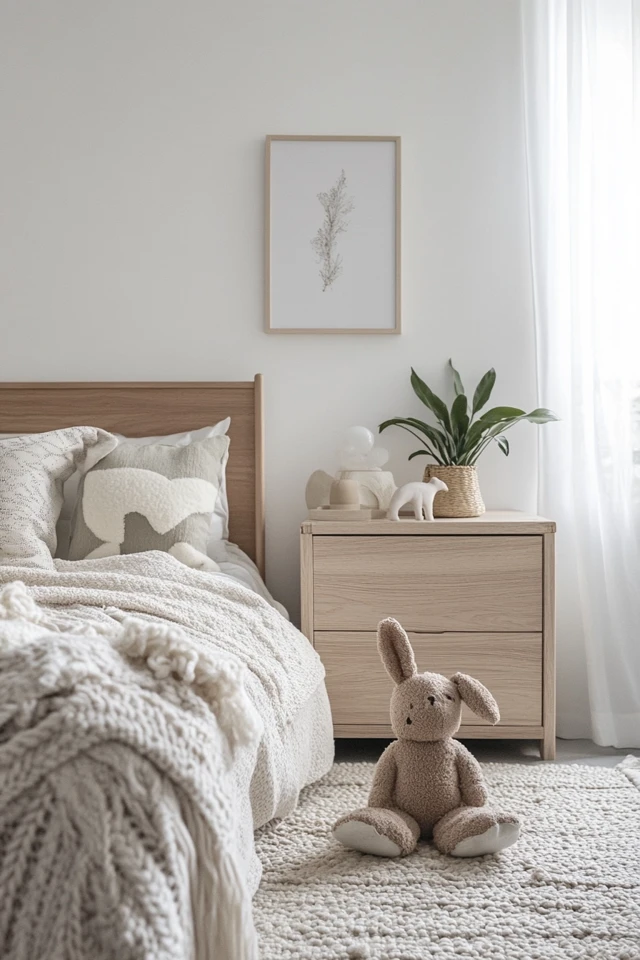
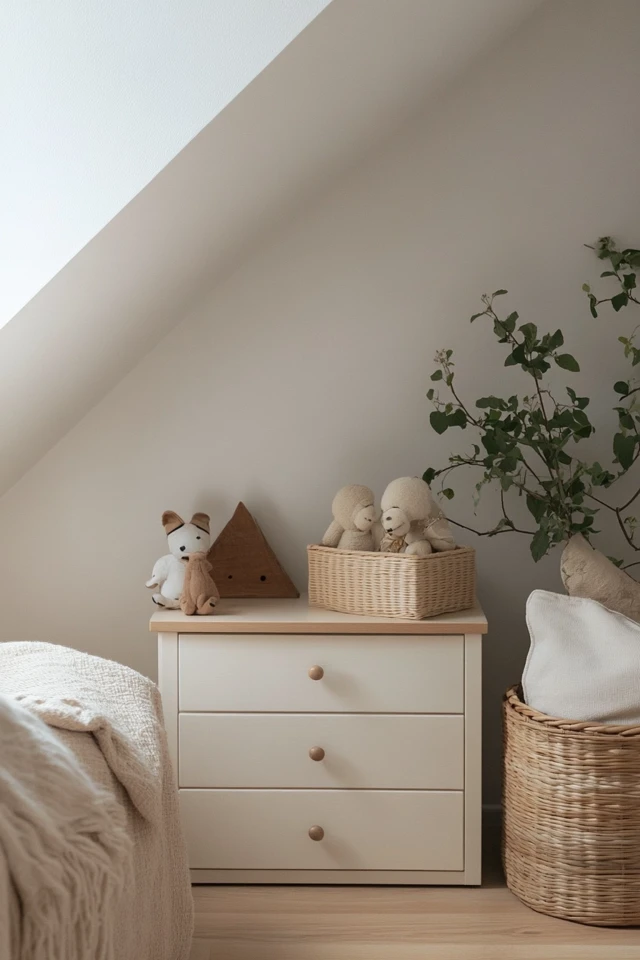
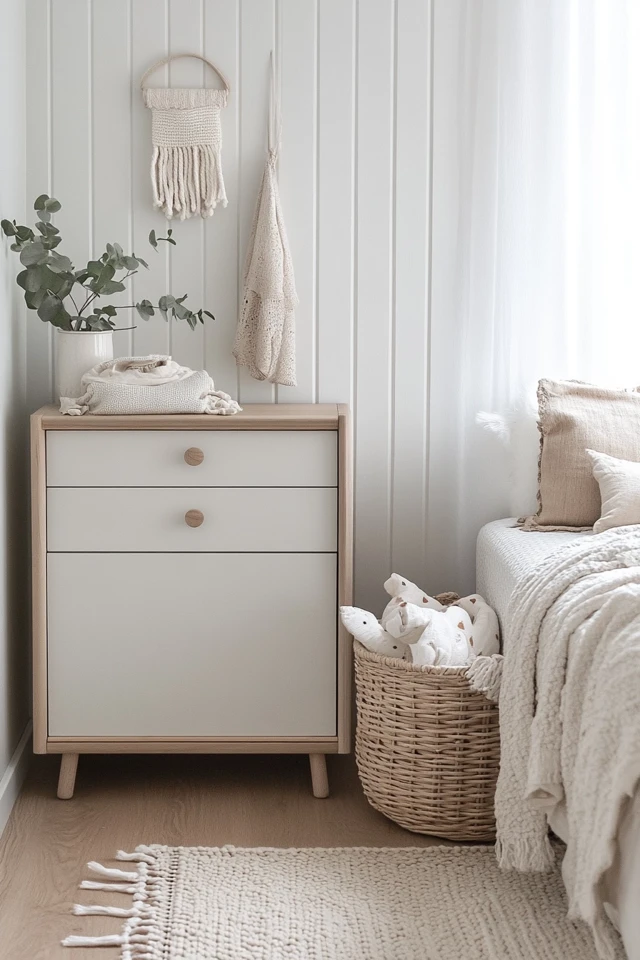
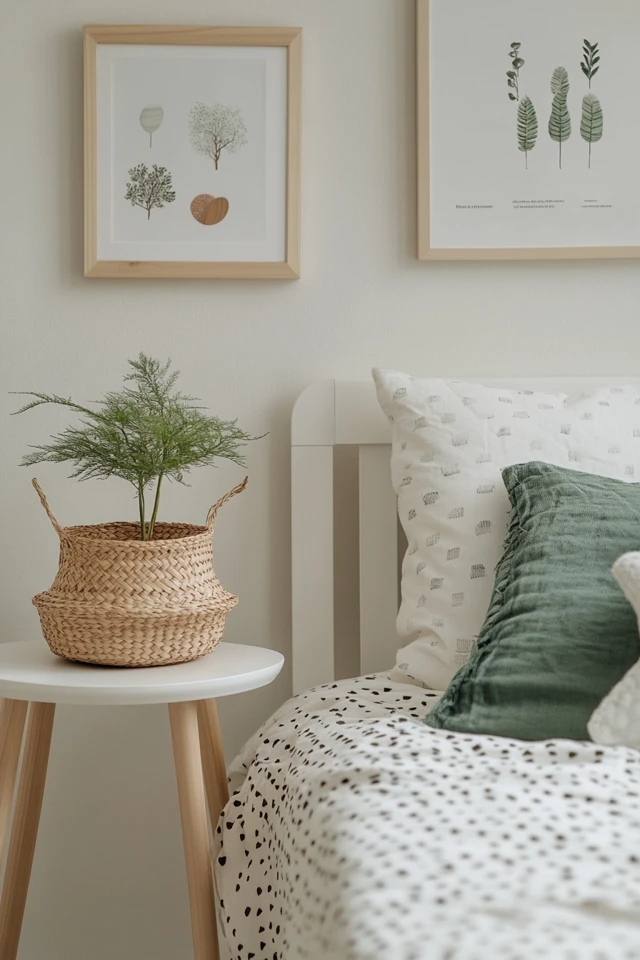
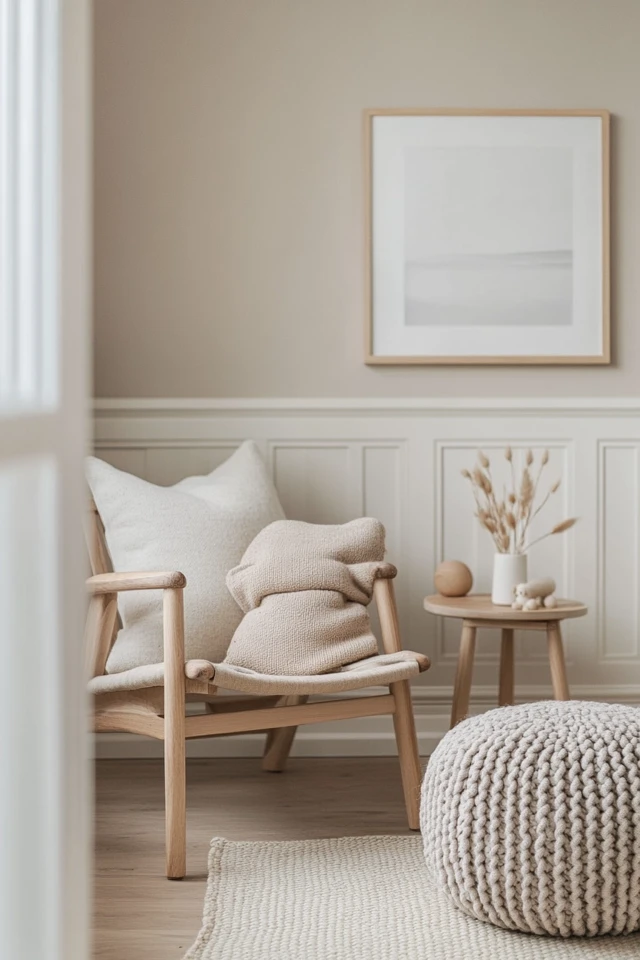
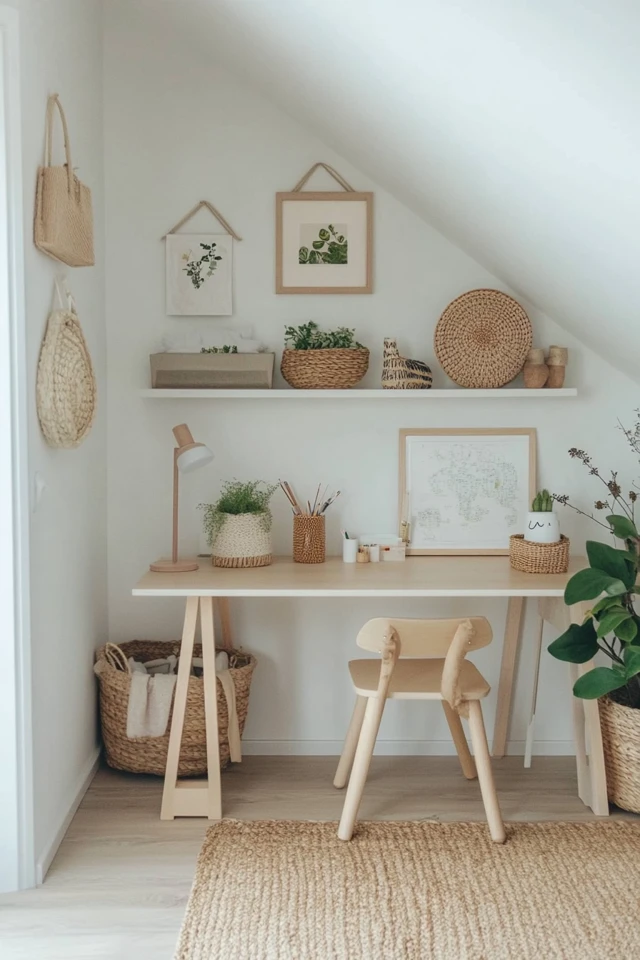
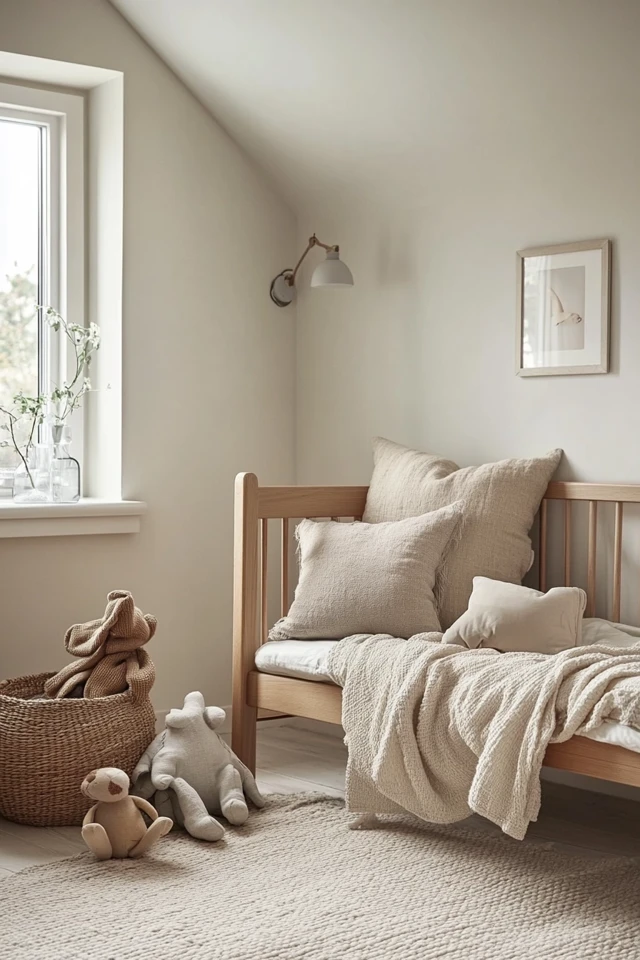
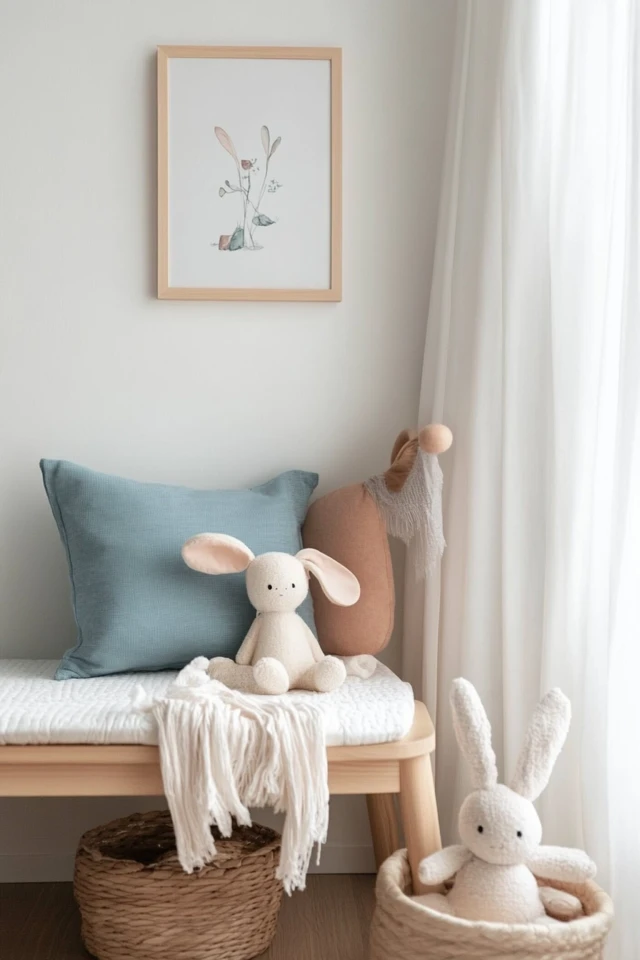
Conclusion
Designing a Scandinavian kids’ room is all about blending functionality with warmth and simplicity. By focusing on neutral tones, natural materials, and clever storage solutions, you can create a space that is both practical and beautiful. The beauty of this style lies in its versatility—it grows with your child, adapting effortlessly to their changing needs and interests.
Whether you’re creating a cozy nursery or a playful bedroom for an older child, these tips will help you achieve a harmonious and stylish Scandinavian design. Embrace the philosophy of “less is more” and let your child’s personality shine in this thoughtfully designed space.
FAQs
1. What colors work best for a Scandinavian kids’ room?
Stick to neutral tones like white, beige, and gray, with soft pastels or muted hues for accents.
2. How do I keep a Scandinavian kids’ room organized?
Incorporate plenty of storage solutions, like baskets, bins, and under-bed drawers, and teach kids to tidy up regularly.
3. Can Scandinavian design work in small kids’ rooms?
Absolutely! Scandinavian design’s focus on functionality and simplicity makes it ideal for maximizing small spaces.
4. What kind of furniture should I choose for a Scandinavian kids’ room?
Opt for multi-functional furniture, like beds with storage, modular shelves, and pieces with clean, simple lines.
5. How can I make a Scandinavian kids’ room feel cozy?
Add soft textures like rugs, throws, and cushions, and use warm lighting to create a snug, inviting atmosphere.

